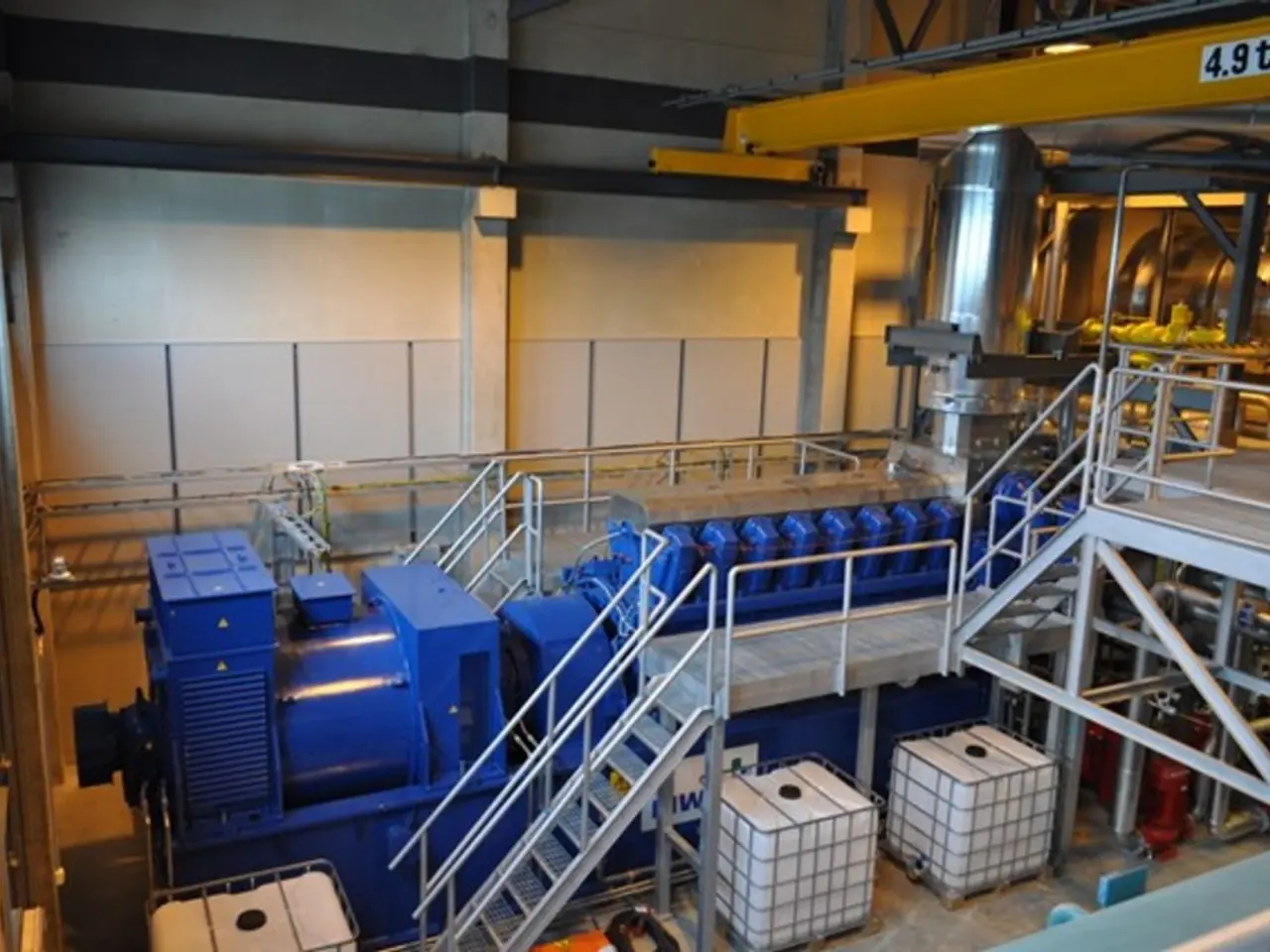Climate scenarios with significant shifts becoming increasingly likely, according to the Government Investment Corporation (GIC)
In a bid to prepare for a range of plausible climate outcomes, Singapore's sovereign wealth fund, GIC, has integrated high transition risk climate scenarios into its portfolio stress testing [1][2]. The fund is particularly focusing on the "delayed disorderly transition" and the "too little too late" scenarios, which reflect growing concerns that smooth decarbonization pathways are less probable under current trends [1][2].
GIC's approach to climate scenarios is broad and flexible, deliberately avoiding a single baseline warming scenario. Instead, the fund stress tests its portfolio across various possible climate trajectories, reflecting rising uncertainty from economic, geopolitical, and policy shifts [1].
Key aspects of GIC's climate scenario approach include:
- High transition risk outcomes: Climate policy changes occur late or disorderly, leading to elevated financial risks.
- Physical climate risks: These may intensify amidst rising emissions.
- Portfolio resilience: GIC aims to achieve this through diversification across asset classes, sectors, geographies, and time horizons to mitigate permanent impairment risk under a wide range of scenarios [1][4][5].
Recent external developments, such as higher living costs and geopolitical risks, influence scenario probabilities and policy support for decarbonization. GIC emphasizes readiness for multiple climate pathways rather than predicting a precise scenario [1].
This approach aligns with evolving practices among large financial institutions reassessing core climate scenarios to better measure risk exposures [1]. While GIC's exact baseline warming assumption is undisclosed, the emphasis on disorderly transitions reflects growing concerns about the probability of smooth decarbonization pathways.
GIC is also eyeing solutions addressing grid congestion, such as dispatchable baseload generation and battery storage. The fund has invested in a leading data analytics provider using predictive modelling to help the insurance industry, corporates, and governments price climate-related risks [1].
Investment opportunities across public and private debt and equity in the climate adaptation market are estimated to rise from US$2 trillion today to US$9 trillion by 2050, with US$3 trillion of this increase driven by further global warming [1]. GIC is upbeat on regulated electric networks and utilities, as investing in their asset base presents additional earnings growth opportunities.
The "delayed disorderly transition" scenario has overtaken the "failed transition" scenario in probability in GIC's latest assessment. Southeast Asia's investments into fossil fuels shrunk, and it was the only economic bloc that saw a decline in renewables investments in the same period, from US$19 billion to US$15 billion [1].
In summary, GIC uses stress tests based on plausible high-transition-risk climate scenarios, including delayed and disorderly transitions, alongside physical risk considerations, to ensure its portfolio is resilient to a spectrum of climate risks and uncertainties [1][2][4][5]. This proactive approach positions GIC well to navigate the evolving landscape of climate-related investments.
[1] GIC. (2021). GIC's Approach to Climate Change. Retrieved from https://www.gic.com.sg/content/gic/en/about-us/sustainability/climate-change.html [2] GIC. (2021). GIC's climate change approach gains recognition. Retrieved from https://www.gic.com.sg/content/gic/en/about-us/newsroom/press-releases/2021/gics-climate-change-approach-gains-recognition.html [3] GIC. (2020). GIC's long-term approach to climate risk. Retrieved from https://www.gic.com.sg/content/gic/en/about-us/sustainability/climate-change/gics-long-term-approach-to-climate-risk.html [4] GIC. (2020). GIC's climate change approach recognised by the Task Force on Climate-related Financial Disclosures (TCFD). Retrieved from https://www.gic.com.sg/content/gic/en/about-us/newsroom/press-releases/2020/gics-climate-change-approach-recognised-by-the-task-force-on-climate-related-financial-disclosures-tcfd.html [5] GIC. (2019). GIC's Climate Change Approach. Retrieved from https://www.gic.com.sg/content/gic/en/about-us/sustainability/climate-change/gics-climate-change-approach.html
- GIC, in preparing for various climate outcomes, incorporates high transition risk climate scenarios into its portfolio stress testing, focusing on delayed and disorderly transitions due to growing concerns about the smooth decarbonization pathways.
- The Singaporean sovereign wealth fund, GIC, employs a flexible approach to climate scenarios, stress-testing its portfolio across diverse climate trajectories, incorporating rising uncertainties from economic, geopolitical, and policy shifts.
- Key aspects of GIC's approach include high transition risk outcomes, physical climate risks, and portfolio resilience, achieved through diversification across asset classes, sectors, geographies, and time horizons.
- GIC is navigating the evolving landscape of climate-related investments by investing in solutions addressing grid congestion, such as dispatchable baseload generation and battery storage, and by backing a leading data analytics provider in pricing climate-related risks.
- The climate adaptation market's investment opportunities are projected to surge from US$2 trillion today to US$9 trillion by 2050, with US$3 trillion of this increase attributed to further global warming, prompting optimism for regulated electric networks and utilities.
- The "delayed disorderly transition" scenario is more probable than the "failed transition" scenario in GIC's latest assessment, as Southeast Asia's investments into fossil fuels decrease, and renewable energy investments shrink in the same period.
- By adopting a proactive approach using stress tests based on plausible high-transition-risk climate scenarios and physical risk considerations, GIC's portfolio remains resilient to a wide spectrum of climate risks and uncertainties.
- This approach aligns with evolving practices among large financial institutions reassessing core climate scenarios to better gauge risk exposures and adhere to principles of sustainability, environmental science, and climate tech, as well as the United Nations Sustainable Development Goals (SDG) and climate finance mandates.




